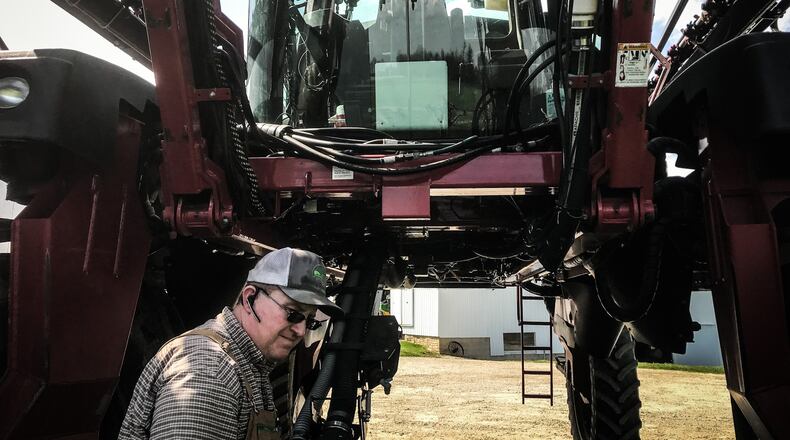Some of those factors include where some countries are experienced drier weather than normal, another country is buying more product than in previous years, increases in the supply chain costs such as animal feed, a slow start to the planting season in the nation’s corn belt including Ohio due to weather, and recovering and ramping up the agricultural industry to pre-COVID-19 levels, he said.
“Farmers with product in the grain bins received a nice surprise this year and why there’s been a lot of trucks rolling through the countryside,” Higgins said. “Most years, farmers break even.”
Prices for corn have reached $5.72 a bushel and $14.27 a bushel for soybeans. That is up from 2020 closing prices of $3.63 a bushel for corn and $9.53 a bushel for soybeans, according to the USDA. The closing prices are up about 30 percent, Higgins said.
As a result, the U.S. Department of Agriculture is predicting a 3.5% to 6.5% increase in meat and poultry prices this year.
For February and March, the food inflation rate was 3.6%, up from 2.6% in 2020, according to the USDA.
MarketWatch recently reported that corn has led the rally among agricultural crops, rising more than 30% in 2021 to touch its highest prices in nearly eight years, outpacing the rally for wheat and soybeans, which also reached their highest prices since 2013.
MarketWatch said the run-up for corn and soybeans, however, may not be over.
In April, officials at the U.S. Department of Agriculture in Beijing forecast China’s corn imports for the 2020-21 marketing year at a record 28 million metric tons, with “continued feed demand and a supply deficit” contributing to the estimate increase. That was a sharp increase from October, when the USDA forecasted China’s global corn imports for the marketing year at just seven million metric tons, according to MarketWatch.
Higgins said in addition to the increase in Chinese imports of corn, which allows expanding the corn and soybean markets, the slow start to the 2021 planting season due to early spring rains, frosts and freezes in March have also been a factor in the higher market prices over the past four to six weeks.
“Farmers are price takers, not price setters,” Higgins said.
Those corn and soybean farmers who have delayed planting their crop or planted a portion of their crop should ease some of the market uncertainty concerning crop yields if good weather prevails over the next few weeks, he said.
“We have until mid-June to get everything planted,” Higgins said. “If we can have 80 degree weather in the coming weeks is going to help a lot.”
Brian Harbage, a Clark County corn farmer, said, “normally higher prices are not good in general. I like things nice and steady which is better.”
He said farmers have had a rough time in the past several years and if they still had unsold product in their storage bins, the money paid with the higher prices would be used to handle debt and pay for other costs. The higher prices create a trickle-down effect for consumers buying beef, chicken and pork, Harbage said.
As of Monday, Harbage said much of his crops were plants in three runs of about 48 hours in length.
“We’ve probably done three-fourths easily,” he said. “We caught up a bunch in the past few days. We’ll be done with one more stretch of three to four days of decent weather.”
About the Author


